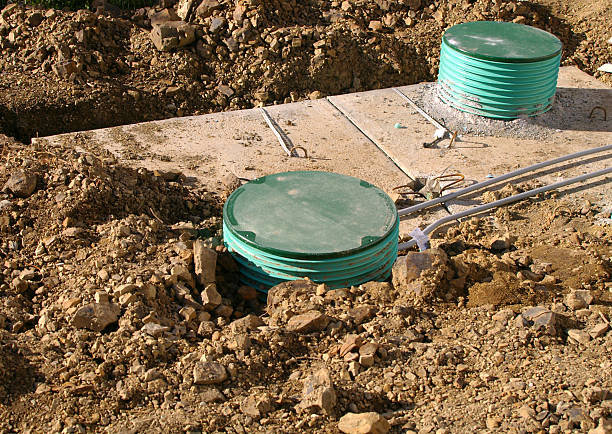Moving to a new place for work or an expanding family brings about changes. Amidst the excitement of transitioning from an apartment to a larger home, it’s crucial to recognize the plumbing and septic systems.
Septic systems may not be the most glamorous topic, but they play a vital role in maintaining a healthy environment for you and your neighbors. If your new home has a septic system instead of being connected to the city sewer, it might catch you off guard.
Regular maintenance of your septic system, including yearly inspections and pumping every 3-5 years, is key. Maintaining a septic system might seem daunting, but it’s a small investment compared to the potential issues like clogs and tanks getting too full.
Proper care ensures your new home runs smoothly and helps you avoid costly repairs.
Knowing the Basics of Your Septic System
One of the first things worth knowing is how your septic system is designed to operate. A grasp of the basic setup will make it easier to understand why and how it’s essential to take good care of it.
- Septic Tank
This is where the action begins. Wastewater from your home enters the septic tank, and here’s where the magic starts.
Solid stuff settles down, forming sludge, while lighter bits like grease rise to the top as scum. The tank’s resident bacteria break down the organic matter.
- Distribution Box
After the septic tank’s treatment, the cleaner water flows to the distribution box. Think of it as the traffic cop, ensuring the treated water is evenly spread out before heading to its next destination.
- Drain Field
This is where the grand finale happens. Like a natural purification party, pipes carry the treated water to the drain field (or leach field). The water seeps into the soil, which acts as a filter, giving it that final polish before it joins the groundwater.
Useful Tips For First-Time Septic Tank Owners
If you’ve recently become the owner of a septic tank, it’s crucial to understand the distinctions between a septic system and a traditional sewer setup.
Homeowners are responsible for their septic system, including the costs associated with inspections and routine maintenance.
Here’s a handy guide for those entering into homeownership with a septic system:
1. Get to Know Your Septic System
First, you’re in charge of keeping your septic system up and running.
Whether you’re into the DIY scene, prefer professional maintenance, or like a bit of both, understanding how your system works is key.
So, where’s your septic tank? When was the last time it got pumped? These are the basics you should know. Having this info at your fingertips can be a real-time-saver when dealing with clogs. And trust us, you’ll want to tackle those quickly.
2. Keep Track of Your Tank’s Last Service
Knowing when your septic tank was last serviced is a key aspect of its ongoing care. When you move into a new place, most septic inspections involve pumping, ensuring the tank is emptied before you settle in. Usually, the cost for this service is covered by the current homeowner (seller).
If you’re unsure whether the tank has been pumped or rented without information about the recent servicing, it’s a good idea to schedule a visit from a professional.
They can inspect the system and, if needed, pump out the tank. Starting with a “clean slate” – or, in this case, a clean tank – gives you peace of mind, knowing that your septic system has been professionally serviced and checked.
3. Be Cautious of What Gets Flushed
Always be mindful of what you flush down your toilet, even if you have a new septic tank. Unlike city sewer systems, septic tanks need a bit more attention.
Stick to flushing only human waste and toilet paper, and avoid things like baby wipes, Q-tips, facial tissues, feminine hygiene products, and condoms.
These items, if they find their way into the tank, may not break down properly and could cause clogs in the pipes leading to the drain field, negatively impacting the overall performance of your septic system.
4. Manage your water Usage
The health of your septic system is heavily influenced by the amount of water you use.
Consider installing water-efficient fixtures to ensure it stay in good shape and aren’t overwhelmed with too much wastewater.
If you want to minimize the chances of encountering problems, try spreading out your water usage over several days, adjust the water levels in your toilets, and opt for low-flow fixtures whenever possible.
5. Seek Professional Help When Needed
If you ever encounter problems or uncertainties, don’t hesitate to seek professional assistance. Certified septic system professionals can provide expert guidance, conduct thorough inspections, and address any concerns you may have.
Addressing potential issues early on is always preferable to avoid more significant problems in the future.
Conclusion
Embracing the responsibilities of septic tank ownership ensures a seamless experience in your new home. From understanding your system’s functioning to practicing prudent water usage, these steps are crucial for preventing issues. Remember, don’t hesitate to seek professional assistance when needed. Addressing concerns early on is key to avoiding more significant problems in the future. With these considerations in mind, you’ll not only maintain the health of your septic system but also safeguard your investment and contribute to a sustainable living environment.
As you embrace the responsibilities of septic tank ownership, remember that Vi Reel Septic and Evacuation is your reliable partner in keeping things running smoothly. For expert inspections, maintenance, and any assistance you might need, our experienced team is just a call away. Your peace of mind is our priority.


